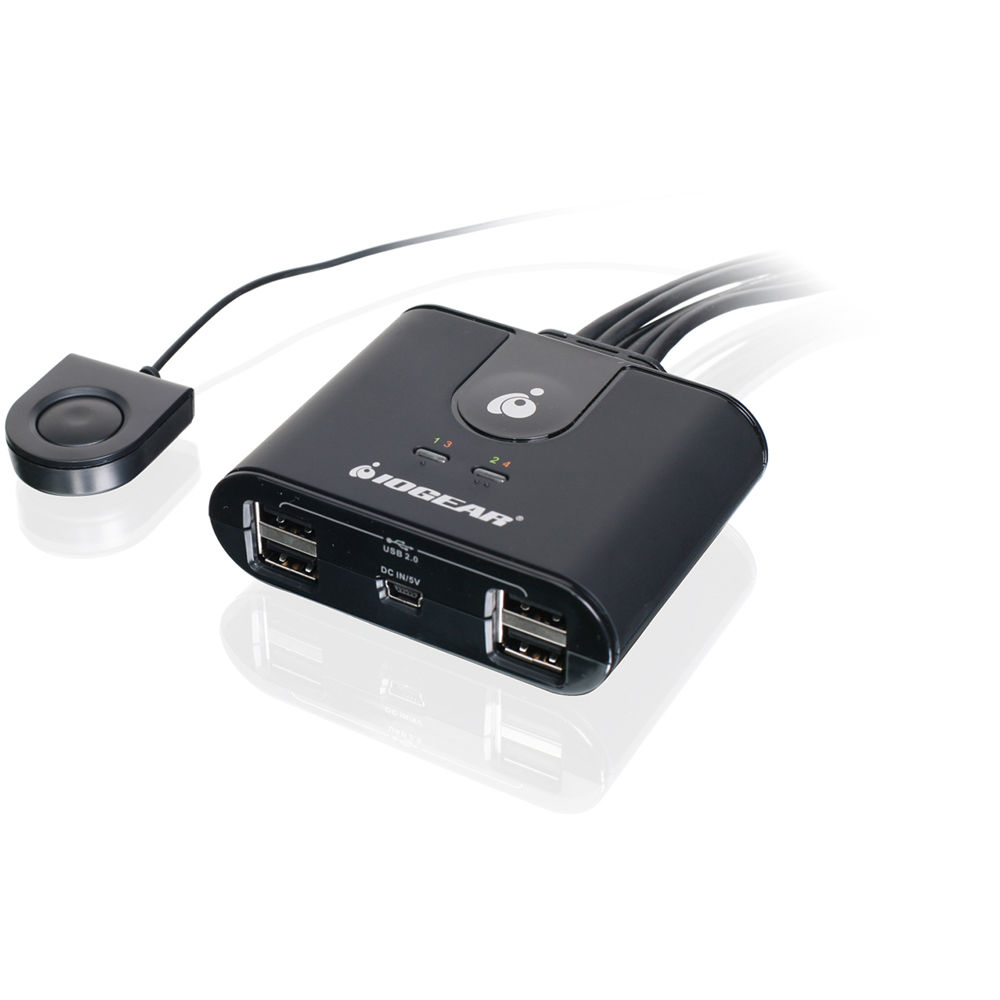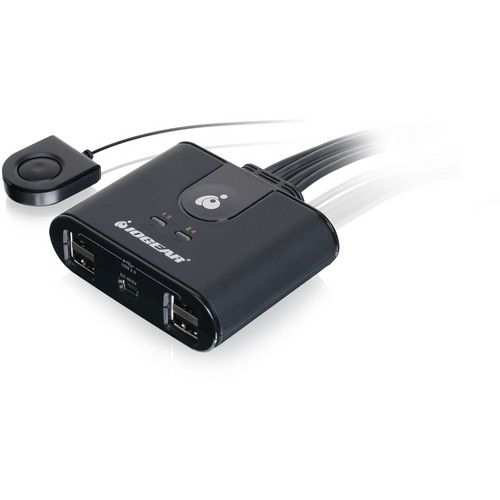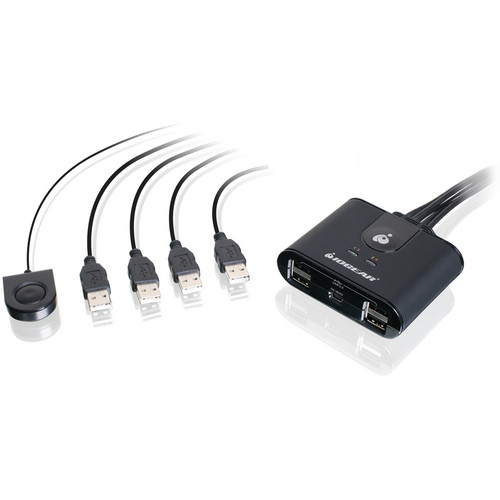IOGEAR 4×4 USB 2.0 Peripheral Sharing Switch
$24.95
In stock
Description
The 4×4 USB 2.0 Peripheral Sharing Switch from IOGEAR allows four computers to share up to four USB peripheral devices. It has four USB 2.0 Type-A ports for connecting peripherals and four built-in USB 2.0 Type-A cables for interfacing with other devices. More devices can be supported by adding an optional USB hub.
Simply press the button on the attached cable to switch to any of the connected computers. The switch is USB 2.0 compliant, and supports data transfer speeds up to 480 Mb/s. The built-in USB ports allow for the charging of smartphones or other USB-compatible devices, while LED indicators show at-a-glance which computer is active and using any peripherals that you’ve connected. Additional features include over-current protection, support for hot-plugging, and a molded in-cable design.
Additional information
| Weight | 0.77 lbs |
|---|---|
| Dimensions | 8.9 × 6.2 × 2.25 in |
| I/O Connections | 4 x USB Type-A USB 2.0 |
| Operating System Support | ChromeOS, Linux, Windows, macOS/OS X |
| Cable Length | 3.8' / 1.6 m (USB)<br />6' / 1.8 m (Remote) |
Reviews (5)
5 reviews for IOGEAR 4×4 USB 2.0 Peripheral Sharing Switch
Only logged in customers who have purchased this product may leave a review.




Miles Cremin (verified owner) –
Works for my needs. I did not want a bunch of mice on the desk…
Haleigh Collier (verified owner) –
You can use this item with 4 pc and share mouse, keyboard and 2 more devises
Vernon Durgan (verified owner) –
I have a Mac machine and a Windows machine. When I need transfer big files I use a usb drive: – plug the usb drive in the Mac and copy the files – eject the usb drive from Mac – unplug the usb drive from Mac – plug the usb drive in the Windows machine and copy the files However once the drive has been ejected (in Mac or Windows) when I switch again with the button and return to Mac or Windows the usb drive is not detected. I have to unplug it and plug it again. So it is the same procedure before buying the IOGEAR device.
Elouise Crona (verified owner) –
I got this to manage several computers on my desk, a Mac Mini, an Intel NUC running Linux, and another Intel NUC running Windows. They’re all going into a single monitor. I drive them with an ErgoDox split keyboard and a Kensington Expert Mouse trackball. There are four USB A sockets on the front of the device that allow plugging in up to four peripherals. On the back, there are four hard-wired (not removable) USB A cables, plus a fifth cable that runs to a small plastic button. Pressing the button cycles through the outputs on the back. The active output is indicated by the two LEDs on top of the box. Left green is 1, right green is 2, left red is 3, right red is 4. So, it’s easy to see which output is active. My only complaint is that, like a lot of modern devices, the box itself is so light that the cables connected to it outweigh the device and will easily drag it around. It doesn’t have any rubber feet to help it stay put, although I suppose I could stick some on, or stick it down to the desk, but in general I would far prefer a steel case with a little heft to it, and some rubber feet, to help it stay put. Remember that the five cables attached to the back aren’t removable so whether they are in use or not they will be hanging off the back. You will probably want to tie them up to reduce the cable mess. For this application I would have preferred shorter cables and the ability to remove the fourth one, as I am only using three. It also would be nice if the switch plugged into the front, rather than the back. I did not test the little USB Mini port on the front which can be used to supply power using an adapter (not included) as it did not seem necessary to make it work. That also seems like it would make more sense on the back of the device. I found that my new 4K webcam won’t work when plugged through the device, so I have to plug that in separately. I guess this is probably because it needs support for faster USB standards. This is not too inconvenient as I usually use the webcam on only one of the three computers anyway.
Jada Huel (verified owner) –
all pros: predictable switching between systems, long term reliability, outgrew some of my 2×4 switches and did not think twice about getting the 4×4 switch, it was an automatic decision.